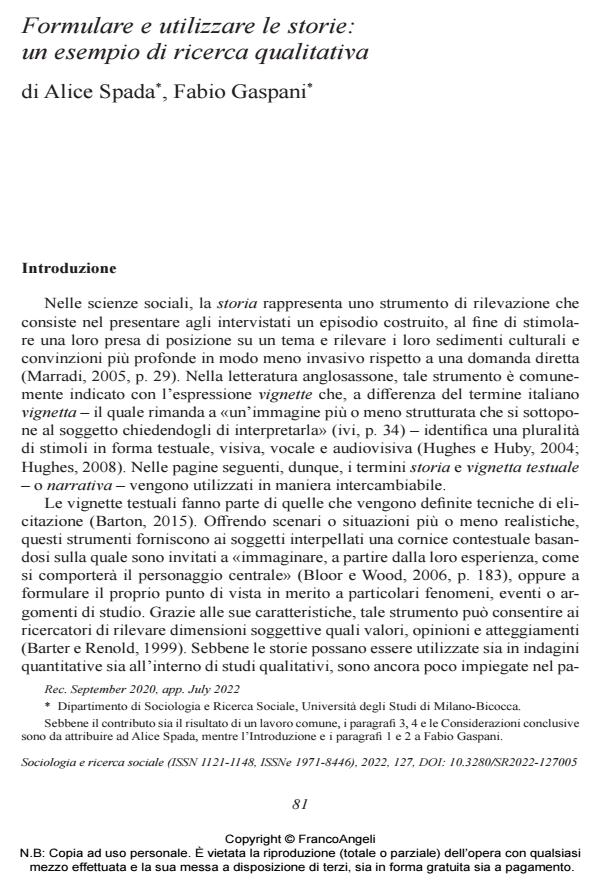Design and usage of narrative vignettes: an example from qualitative research
Journal title SOCIOLOGIA E RICERCA SOCIALE
Author/s Alice Spada, Fabio Gaspani
Publishing Year 2022 Issue 2022/127
Language Italian Pages 18 P. 18-98 File size 211 KB
DOI 10.3280/SR2022-127005
DOI is like a bar code for intellectual property: to have more infomation
click here
Below, you can see the article first page
If you want to buy this article in PDF format, you can do it, following the instructions to buy download credits

FrancoAngeli is member of Publishers International Linking Association, Inc (PILA), a not-for-profit association which run the CrossRef service enabling links to and from online scholarly content.
In social research, narrative vignettes are increasingly implied to explore mul- tiple themes, including sensitive ones. This article illustrates the characteristics of this research tool, as well as the ways in which it is used. Furthermore, through an example relating to the educational field, the present work intends to provide indications for the formulation of stimulus texts for qualitative research. The focus is on the translation of conceptual areas into descriptive scenarios by maintaining adherence to the investigated themes. Moreover, potentialities and weaknesses of the use of narrative vignettes are examined.
Alice Spada, Fabio Gaspani, Formulare e utilizzare le storie: un esempio di ricerca qualitativa in "SOCIOLOGIA E RICERCA SOCIALE " 127/2022, pp 18-98, DOI: 10.3280/SR2022-127005